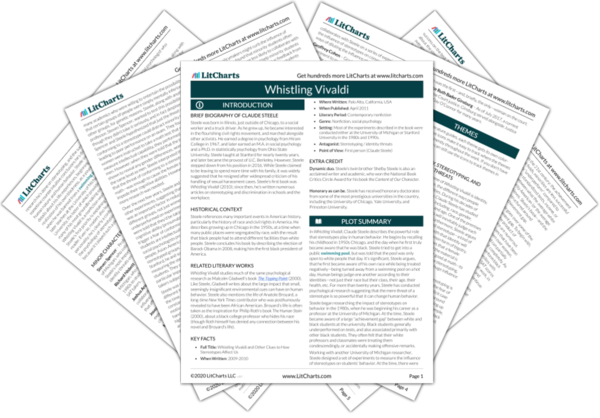Steele began his book by discussing the segregation of Chicago in the 1950s. He ends the book by discussing the rise of a brilliant, black, Chicago-based politician—Barack Obama. In this way, Steele seems to be taking an optimistic view of recent American history. Many of the racial obstacles that Steele had to deal with as a child are now nonexistent. However, this doesn’t mean that black people don’t have to deal with stereotyping, or the threat of stereotyping, anymore. Steele concludes by making a point that he’s suggested throughout the book: Americans shouldn't try to hide their identities. Rather, they should celebrate their identities, while also understanding that identity, and society’s awareness and perception of identity, plays a huge role in dictating behavior.
